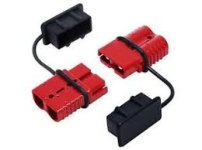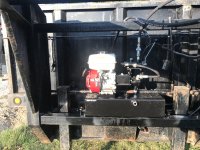A deep cycle battery has thicker beefier plates. Because of the beefier plates it's more tolerant of deep discharges than an automotive type battery. I don't remember if a deep cycle has any fewer amp hours of capacity, but they have fewer cold cranking amps. The thinner plates in an automotive battery give more instantaneous amps to run a starter than a deep cycle.
The worst things you can do to a lead acid battery is discharge it below 50% and let it sit discharged. Lead sulphite starts to build up on the surface of the plates when not fully charged. Lead sulfite is an insulating crystal & causes degradation to the plates wearing & chipping off the lead plates.
Trickle chargers that claim to blast off lead sulphite with a specific frequency of electrical pulses sound like snake oil, but do work a fair bit. They won't fix a shorter cell, but can rejuvenate and/or prolong the life of a lead acid battery a decent bit.
I'm a big believer in trickle chargers, especially smart ones with the pulse stuff I previously mentioned. I've got a solar Battery Minder in the beater F250 that doesn't get used much & stopped having dead battery issues in it since it was installed.


